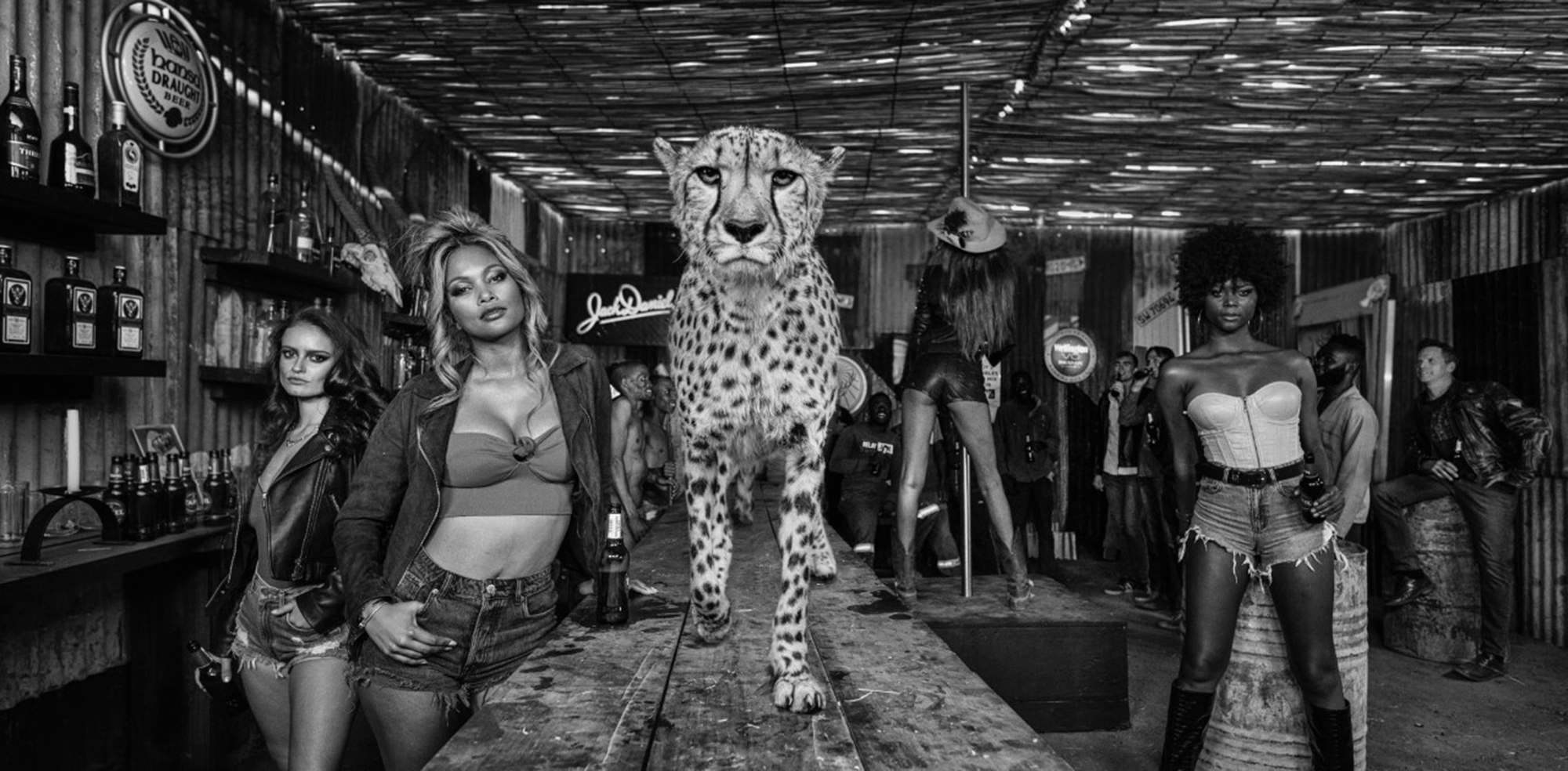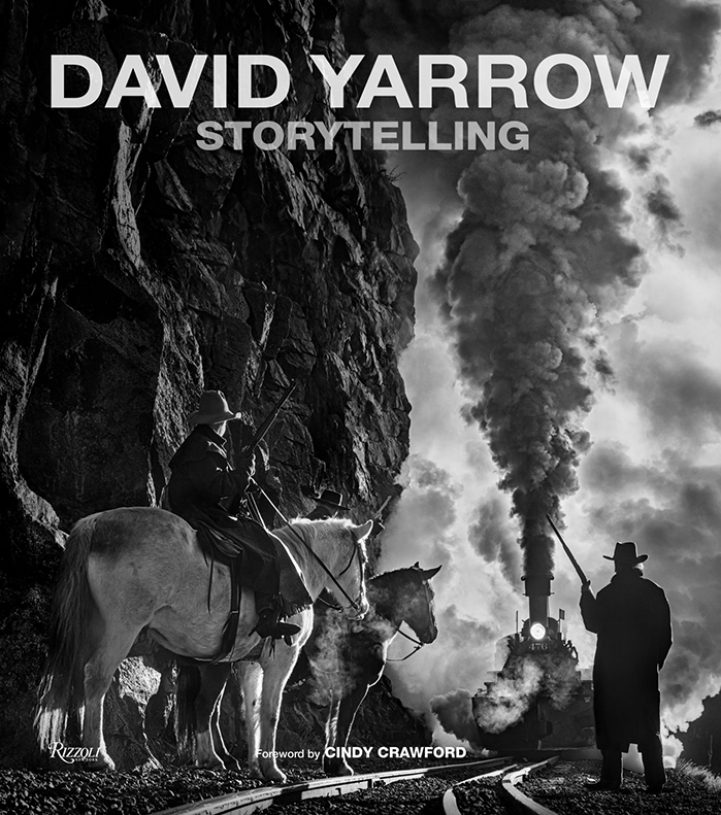Culture Shock: “STORYTELLING” BY DAVID YARROW
World-renowned photographer David Yarrow’s latest book showcases his most iconic and unpublished images like never before

When Scottish photographer David Yarrow was just 20 years old, he took the now-famous photograph of Diego Maradona holding up the 1986 World Cup in Mexico City for The Times. After that pivotal moment, he was tapped to cover major sporting events, forging a path for himself as a fine art photographer, documenting only the best of nature and fashion.

Now, Yarrow’s newest book, Storytelling, showcases a career-defining glimpse at his unique chronicle of work. And in a full-circle moment, Yarrow’s early muse, solidified supermodel, and long-time collaborator Cindy Crawford wrote the foreword. Inspired by legendary directors Martin Scorsese, Steven Spielberg, and Clint Eastwood, the book is a mixture of iconic and unpublished photographs, with the likes of Cara Delevingne, Ciara, and Alessandra Ambrosio splashing the pages throughout.
Storytelling is an evocative look at the legacy of the photographer, seen through his one true love: image-making. “Great photographs can never be repeated,” Yarrow says. “And the possibility of waking up every day with the chance, albeit small, to make a great image is something that always energizes me.”
Below, Yarrow discusses his early connection with photography, creative process behind “Storytelling,” and more.
V MAGAZINE: First, I wanted to ask about your upbringing and introduction to photography. Did you always have a passion for the medium? Or did that passion develop later on?
DAVID YARROW: I picked up a camera when I was 14. I loved sport and I used my camera to film sport. I was not good, my camera was not good, but overtime I got better. Move forward six years and I was on the pitch at the World Cup Final in Mexico City. The stuff of dreams but there was many a bump along the way—and 36 years later I am still learning. The passion has been constant as well as the will to improve.
V: From its ability to translate narratives, capture moments in time, and so much more—for you, what makes the medium of photography so special?
DY: A photograph freezes a moment in time and allows that moment to be kept forever. Its single frame brevity is its power as that one frame is then ring-fenced in complete isolation, unlike a moving picture. This allows the viewer to interpret the wider narrative and that process of interpretation is why photography has crept onto art’s lawn. Great photographs can never be repeated and the possibility of waking up every day with the chance—albeit small—to make a great image is something that always energizes me.
V: Next, I wanted to ask about your forthcoming book Storytelling. What prompted you to release the book, especially at this time?
DY: We try and do a book every three years: if a book has, say, 120 images that sets the target to take 40 photographs worthy enough for a book every year. I think that is one hell of a challenge, especially during COVID restrictions. But I am proud of this three year collection—there are not many filler images.
I never want to go backwards; we always want to push forward and get better. I think this is our strongest book yet in terms of images, narrative, and flow. There is a bias [in the book] towards telling stories in America, in part because we shot throughout COVID and it was easier to work in America than most other places. But over and above that, America offers an unrivaled visual canvas in which to tell stories.

V: And can you explain the significance of the title? How does that relate to the narrative-focused nature of photography?
DY: I am a storyteller. My journey has taken me away from taking pictures and towards making pictures. I have enjoyed the more literal side of photography, but it is not where I am right now. I think if a picture tells a story or suggests a story it can emotionally engage the viewer for a longer period of time than an action image—whether that image was taken on a sports field or the Serengeti. Photography is all about emotion and if there is the potential to take control of those variables that tug on emotion, I will grab that chance.
V: Can you take us through the process of creating Storytelling? What did the initial moments and ideas consist of?
DY: The book came together over a year or so of editing and looking at where we had holes that we could fill. The chapters came together as the filtered out the more generic images and raised the quality of the book, week by week. I filmed fairly intensely in the first four months of 2022 and the work in this final period made a material difference. I don’t think there are many filler images in the book—certainly fewer than in my previous four books and we are very tough on ourselves.

V: I read that the book is inspired by great cinematic directors. Can you elaborate on that point? How did that inspiration relate to your expansive breadth work?
DY: I would say that I am inspired by directors and the final book showcases that. Scorsese, Spielberg, and Eastwood all emotionally invest with great intensity. There is such work ethic, attention to detail, and a high bar in all that they do. That has informed me and I do believe that the relationship between reward and hard work is linear. These men are all geniuses, but that was never enough; the dedication to their craft is humbling. I am terrified of boring people and that insecurity is good. It was also Spielberg’s biggest fear, so I am in the best of company.
V: The book features a foreword by Cindy Crawford, who you have collaborated with in the past. How did that come about? And what was that partnership like this time around?
DY: Cindy and I have collaborated for many years now. She is a true American icon and a joy to work with. I was lucky that the first assignment we did together worked and I won her trust. I think she has earned the right not to give people too many chances. We know each other well now and that makes days in the field so much fun and her team are, as you would imagine, the very best. Cindy’s stylist Nicole Allowitz now works with us on other projects, we like her so much. I think the work that Cindy and I have done together has raised over $3m for the Pediatric Cancer Hospital in Wisconsin and that number will only rise with the publication of the book. We both visited the hospital last year and it was humbling to see the progress that is being made in this vital area of medical research.
Storytelling is now available via Rizzoli.
Discover More
